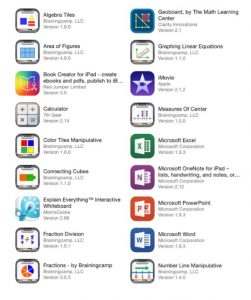Mathematics teaching has traditionally followed a linear form of instruction that involves an emphasis on skill drills and repetitive technique practice that requires students to progress through their learning path without adequate consideration to personalized and individualized learning styles. However, students require greater opportunities to engage with collaborative, constructivist learning approaches as they build a mathematical understanding through discussion, experimentation, and reflection. As Constructivism views knowledge as the outcome of experience mediated by one’s own prior knowledge and the experience of others, student learning benefits through the exploration of mathematical and scientific concepts by engaging with a variety of learning technologies, including programming languages.
Despite the benefits of enhanced student engagement and motivation, and the development of skills in creativity, problem solving and collaboration, technologies for learners (including programming) have been slow to gain entry into formal educational settings, as their integration necessitates major changes in school cultures. In some cases, it seems that technologies for learners have not been widely accepted in school instructional programs because they challenge the standards-based perspective on instructional change in schools.
By reflecting on the roles that technology plays in the current educational climate, we also need to reflect on past approaches to technology, and to consider how we’ve ultimately arrived where we are. In terms of mathematics and science learning, the work of Seymour Papert integrates technology across the curriculum, and Papert’s ideas and perspectives on educational technology can help move us toward an exciting and engaging future for our students. Seymour Papert’s influence extends throughout current pedagogical approaches to the integration of educational technology, constructivism, constructionism, and the teaching of science and mathematics, to name but a few areas of significance. Papert and Solomon’s Twenty Things to Do With a Computer (1971), raises key questions and issues around educational technology that are still current and overwhelmingly relevant, more than 40 years after the report had been written.
Papert and Solomon question the reasons as to why schools seemed to be “confined” in their approach to educational technology, particularly within mathematics and science, to uses that limit students to problem solving uses rather than opportunities to produce some form of action. Constructivist theory, when combined with technology integration, supports the enhancement of opportunities for students to engage in collaboration, higher order thinking and problem solving to enhance classroom learning environments.
References
Papert, Samuel and Solomon, Cynthia. (1971). Twenty Things to Do With a Computer. Massachusetts Institute of Technology: A.I. Laboratory.
